I Refused to Let My Stepmother Dictate My Wedding—I Have Been Too Kind

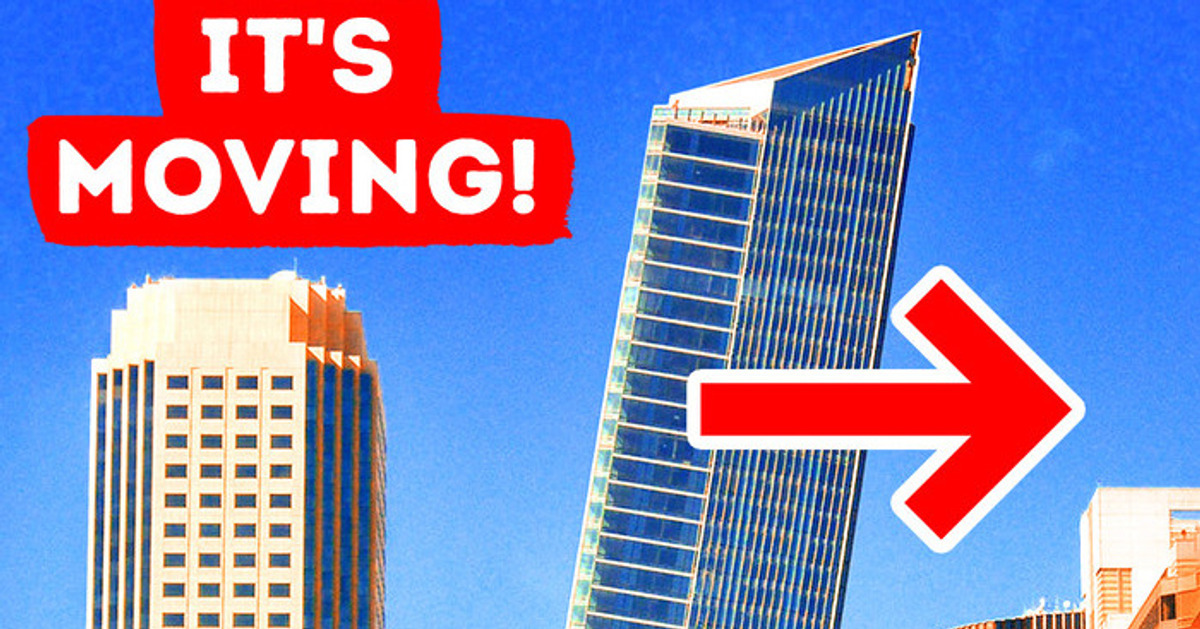
It’s one of the most famous Instagram-able spots in the world. There are pictures of people leaning on it or pretending to support it so that it doesn’t fall. There are even images of it looking like an intricate ice-cream scoop. Of course, I’m talking about the Leaning Tower of Pisa — a famous Italian landmark. It always looks as if it’s seconds away from toppling over!

Located in the Italian city of Pisa (which would make sense), this construction is better known for its precarious posture rather than its history or purpose. Back in 1178, when the construction of the tower was still underway, people realized that the building was starting to lean over. And that was even before they had reached the third floor!
They first blamed the architect, whose left leg was shorter than his right by two inches, and had a built in lean, but no, I just made that up. They soon figured out that this was happening because of the soft soil beneath the tower. It soon became obvious that starting construction on top of the soil made of clay, fine sand, and shells wasn’t a promising idea. Centuries went by. Soon, people understood that the 180-foot-tall tower wasn’t merely leaning. It was falling in slo-mo — and at an alarming rate of 8-hundreths of an inch per year. That may not sound like a lot, but multiply that by hundreds of years, and — well, you can just look at the pictures.
These days, the leaning tower is more than 16 feet off its perpendicular axis. It’s not toppling over only because its center of gravity continues to fall within the base of the structure. Plus, it’s constantly monitored by local authorities.
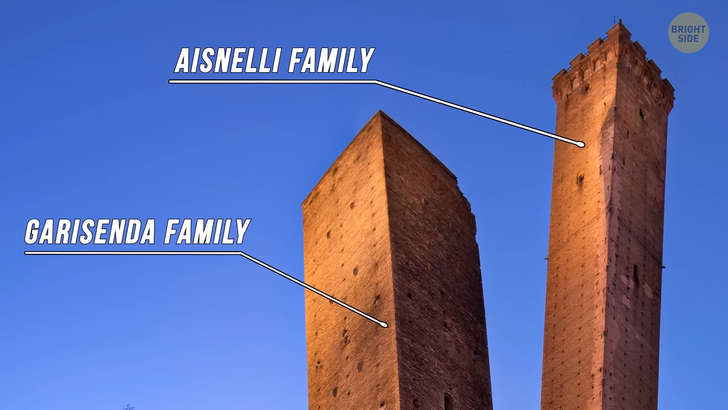
Since I’ve already got you excited for your next trip to Italy, you should know that the Leaning Tower of Pisa isn’t the only crooked building in the country. About two hours away from Pisa, up north in the city of Bologna, there are not one but two leaning constructions — “Le Due Torri.” which sounds better than the two towers. These towers were each named after the families that funded their construction — the Aisnelli family and the Garisenda family. Because of its tilt, the Garisenda Tower is no longer open to visitors.
The Asinelli Tower, however, can still offer tourists a wonderful view of the city. That is if you manage to finish climbing almost 500 steps. It does come with a catch for students, though. Italians have a local superstition saying that those who climb the tower up to the top will never be able to finish their studies. Well, that’s certainly a disincentive.
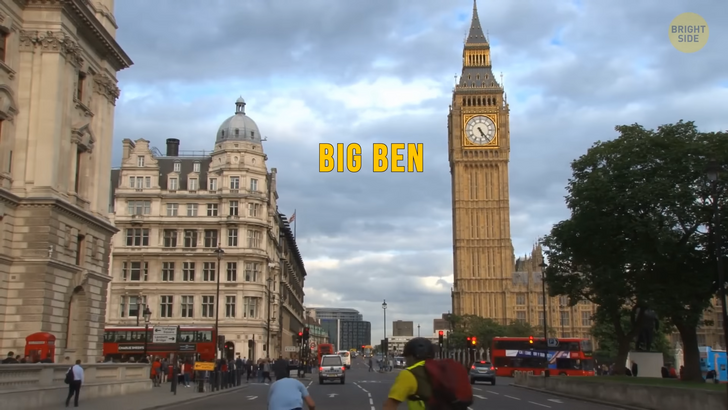
Londoners have their own tilted tower, but it’s probably not the one you may think about. Yep, it’s the famous Big Ben — or Elizabeth Tower — that’s its official name, by the way. Big Ben is just the Bell. Luckily, it’s not leaning to one side as fast as other, more impressively crooked buildings. It’s currently tilting at a rate of 0.3 inches per year. This whole tilting thing is happening mostly because of several infrastructure projects, like the expansion of the London Underground or the construction of parking lots near this historic building. Locals are not that concerned, though. If the latest data is correct, it’ll take Elizabeth Tower about 4,000 years to catch up with its Italian counterpart, the Tower of Pisa.
There’s a strangely shaped building in Poland as well. It’s called the “Little Crooked House.” You can find it in Sopot, Poland. Its construction was finished in 2004. This building looks like it’s just jumped out of a fairytale. And no wonder — the architects behind this project claimed they had been inspired by books illustrated by Jan Szancer. This project has lots of striking details, for example, warped walls, sandstone-framed windows, and stone decorations. The building also features curved tinted glass windows and a concave roof. As a popular tourist attraction in Poland, the Little Crooked House currently has a lot of shops, offices, and restaurants. You don’t have to travel all the way to Europe to check out tilting buildings.
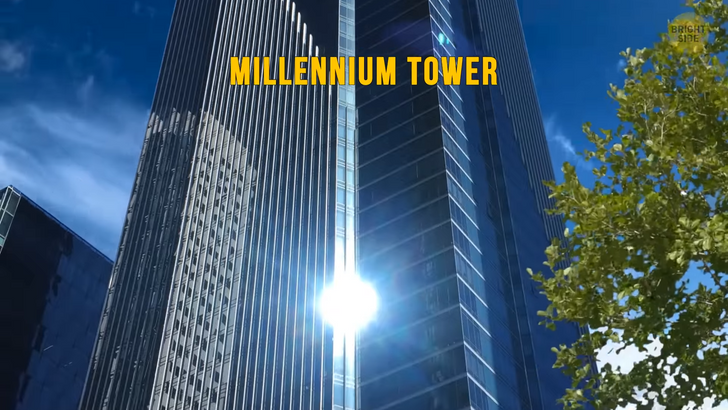
The Millennium Tower, located in the city of San Francisco, is leaning, sinking, and sliding! Either they’ve signed the building up for dance classes, or there’s something wrong with it, don’t you think? The biggest issue with the Millennium Tower apparently has to do with the 60 to 90-foot-long friction piles that support it. They appear to have been driven into the sandy upper soil rather than the bedrock, which is 200 feet further down. Since the building is placed on land that can soon become too mushy, the solution might be to anchor the construction down to the bedrock. The current plan is to add a bunch of piles to help reduce the weight of the building’s foundation. Surprisingly, in 2017, the inspection carried out by the local authorities confirmed that the building was still within safety requirements. There was some damage to the foundation and electric system, though.
But not all leaning structures are tilted as a result of an engineering mistake. The Capital Gate Tower in Abu Dhabi, for example, is a 520-foot-tall-skyscraper that leans almost 18 degrees to the west. It even made it to the Guinness World Records in 2010 as the “World’s furthest-leaning human-made tower.” The engineering effort spent on it is impressive, to say the least. The angle of the tower is evened out by the world’s first “pre-cambered core.” That’s a fancy way of saying that loads of concrete were mixed with steel, and 490 piles going nearly 100 feet into the soil were added to the construction.
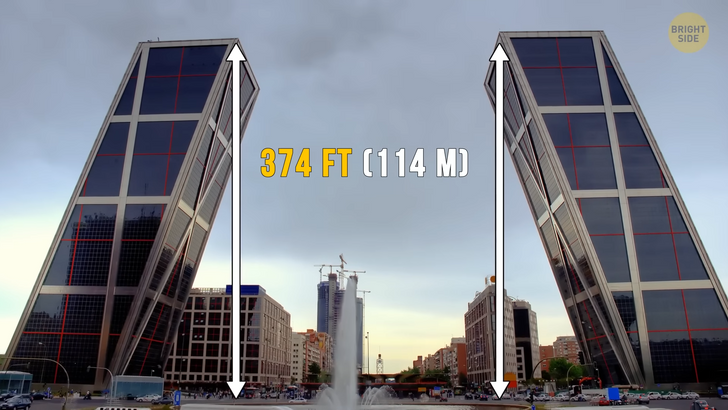
Another modern (and inclined) architectural design is that of the Tower of Montreal — part of the city’s Olympic Stadium — which is currently the tallest leaning building. It’s over 575 feet tall. The Gate of Europe in Madrid consists of a couple of impressive twin towers, 374-feet-tall and inclined at about 15 degrees.
We’re heading back to Europe, to the City of Love. Before visiting Paris, don’t forget to check out the “sinking house” or “tilting house.” Trust me, it’s a place not a lot of people know about, and it’s a great location for spectacular pictures. It’s quite easy to miss out since this construction isn’t actually leaning. But if you angle your camera correctly, this quirky optical illusion will make your viewers think that you’ve just visited a house that is halfway swallowed by the ground it stands on. When you’re in Montmartre, next to Sacre Coeur, you’ll see some steps. On the right-hand side, there’s an orange house. And here’s the trick: because this house is located behind a pretty steep hill, all you need to do is rotate your camera at about 45 degrees to get the desired effect. Or you can take an even easier route and just edit the photo after you’ve taken it.
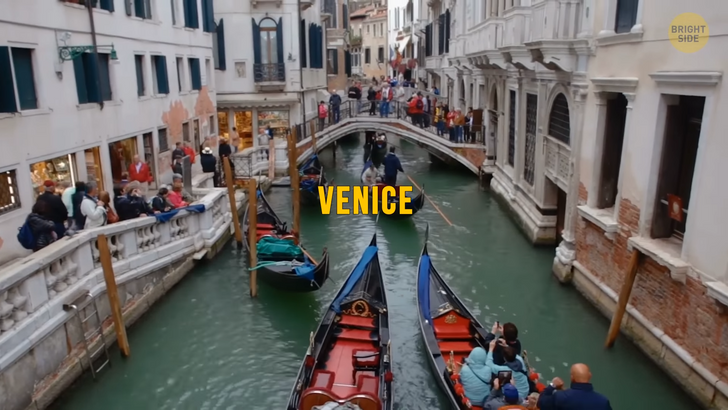
There are cities in the world that are sinking right at this moment, some of them at an alarming rate. Probably the most worrying is the city of Venice. But if you ask a Venetian whether their city is sinking, they’ll say, “Less than the sea is rising.” Well, you got me there, pal. Under the city, there is sedimentary soil, which is still compacting and settling. That’s why the problem here appears to be two-fold. Not only did Venice sink about 9 inches in the past century, but the sea level also rises with each passing year. This makes this gorgeous region more prone to flooding. Even worse, during the colder season, the phenomenon called “acqua alta” — or high water — occurs. That’s when an unusually high tide arrives together with strong winds and storms. In 1966, for example, one such storm raised the water in Venice to more than 6 feet above the usual level.

One of the fastest-sinking cities in the world is Jakarta, the capital of Indonesia, which is also one of the world’s most populated locations. The process has been happening for decades. And if the current data is correct, over 95% of North Jakarta will be flooded by 2050.
The Northern part of the city has sunk a shocking 8 feet in ten years. And now the rate is almost 10 inches per year. Jakarta is also sliding — in some locations at a rate of almost 6 inches each year. The rest of the city is sinking and sliding too. But at least it happens at a more moderate rate compared to other locations in the world. The main reason for this alarming process is the fact that there isn’t a big enough water supply for the huge population of the city (over 10 million people as of 2020). Strangely enough, the city does have fresh water at its disposal. It has 300 days of rain per year, and thirteen rivers pass through it. The problem lies with the fact that this water cannot be stored as Jakarta’s wetlands have been turned into a concrete jungle. That’s why people living in the city have to make their own wells to get fresh water. Continuously taking water from the ground leads to loads of empty underground space, called subsidence. This leaves the city suspended on almost hollow ground, and eventually, it will sink.











